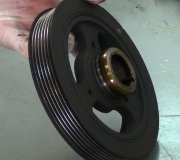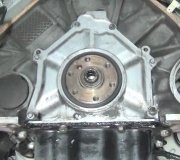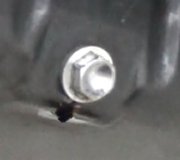Thanks for the extra details. I feel better knowing they put oil in it. Rusted out oil pans are common on Ford products, especially if you live in places like Wisconsin, the road salt capital of the world. Normally the oil seeps out; it doesn't pour out from the rust holes. To find a puddle underneath suggests something more than rust holes. A loose or leaking oil filter, an improperly sealed new oil pan, and a leaking warning light sending unit are likely suspects.
One thing that catches a lot of people sooner or later is "double-gasketing" a new oil filter. That's where the gasket from the old filter sticks to the engine and doesn't get noticed, then the gasket on the new filter goes over it. It could take a while, but eventually the old seal is forced out by oil pressure and results in a really bad leak. This happened to one of my cars once, but it leaked so badly, I saw the oil on the floor before I got out of the shop. Lost two quarts of oil in 20 feet!
I'm confused why additional leaks were not discovered when the new pan was installed. Part of the service should include thoroughly cleaning the area and inspecting for more leaks. If they did clean the area, that will make it easier to see the source of the current leak. To be fair, it is possible for a leak to develop long after you leave the shop. It is easier to come to a conclusion after the source of the new leak is found.
Is it possible the engine damage began with the previous owner due to the original leak, and continued to get worse over time? Low oil results in the oil pump drawing up air which kills the oil's ability to isolate moving engine parts. Once the engine bearings start to wear away, adding oil will not stop them from deteriorating further. It would be helpful to know exactly what is wrong now with the engine. That will help too to come to a conclusion.
Caradiodoc
Tuesday, March 2nd, 2010 AT 11:12 AM



